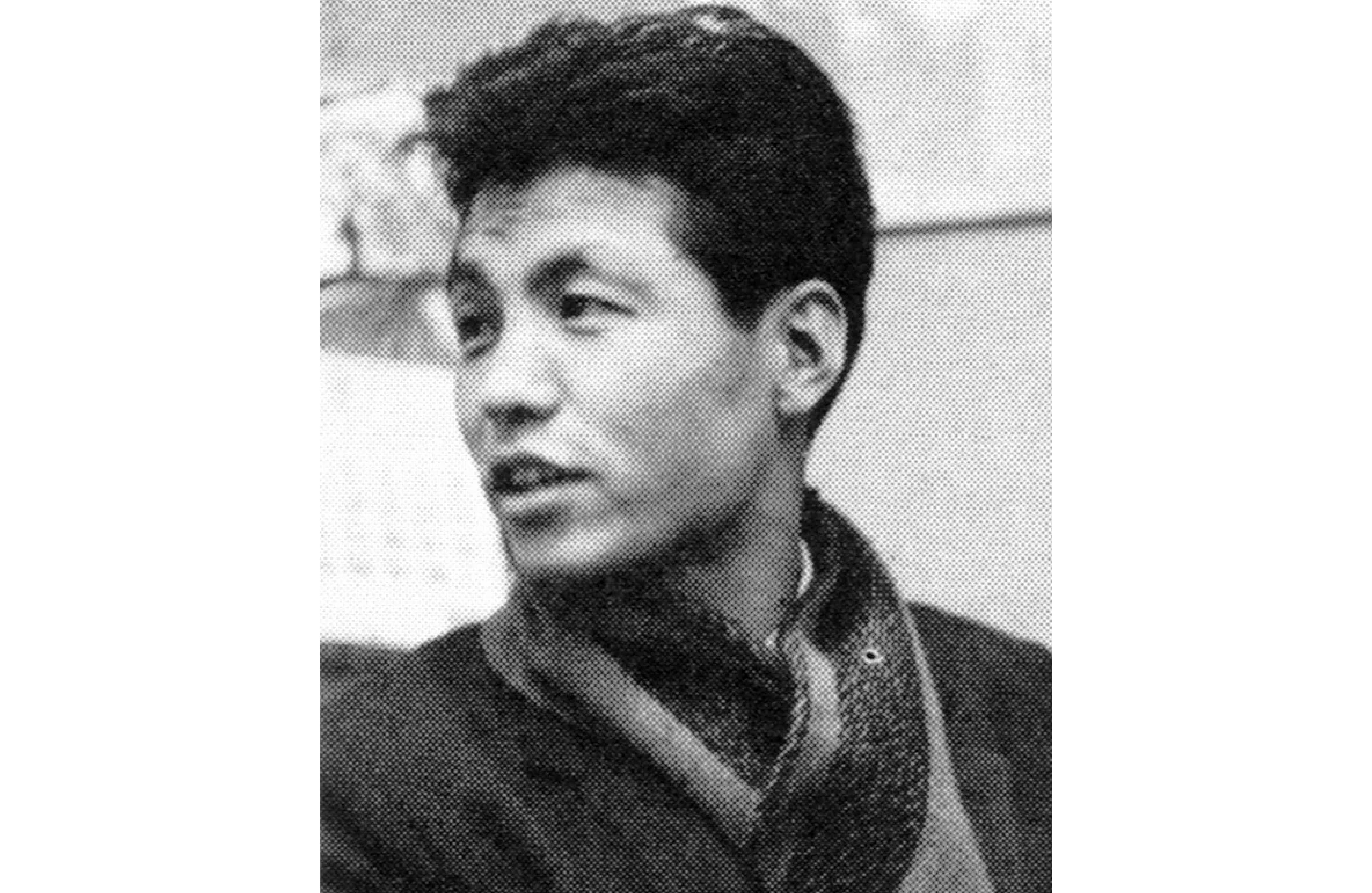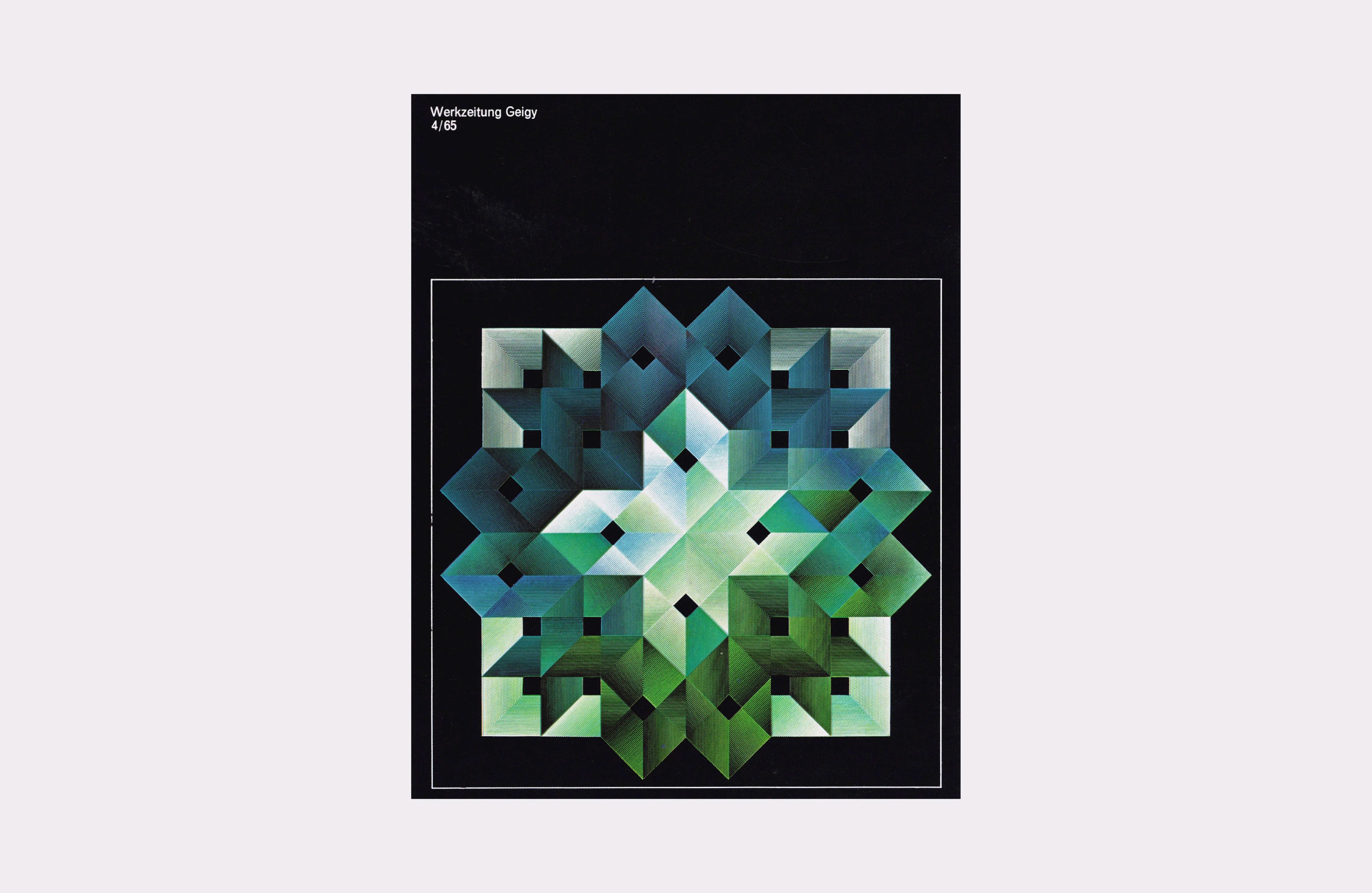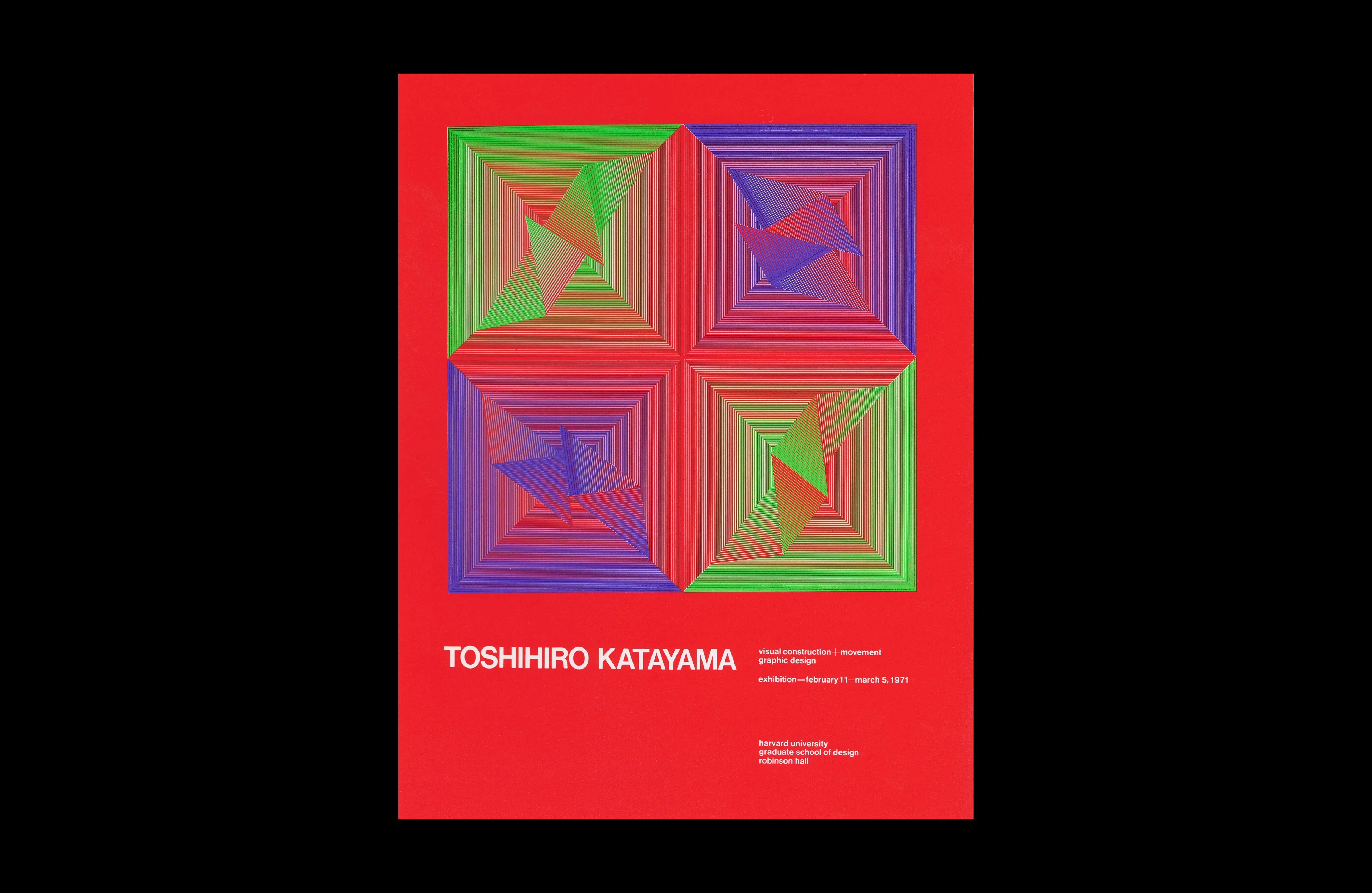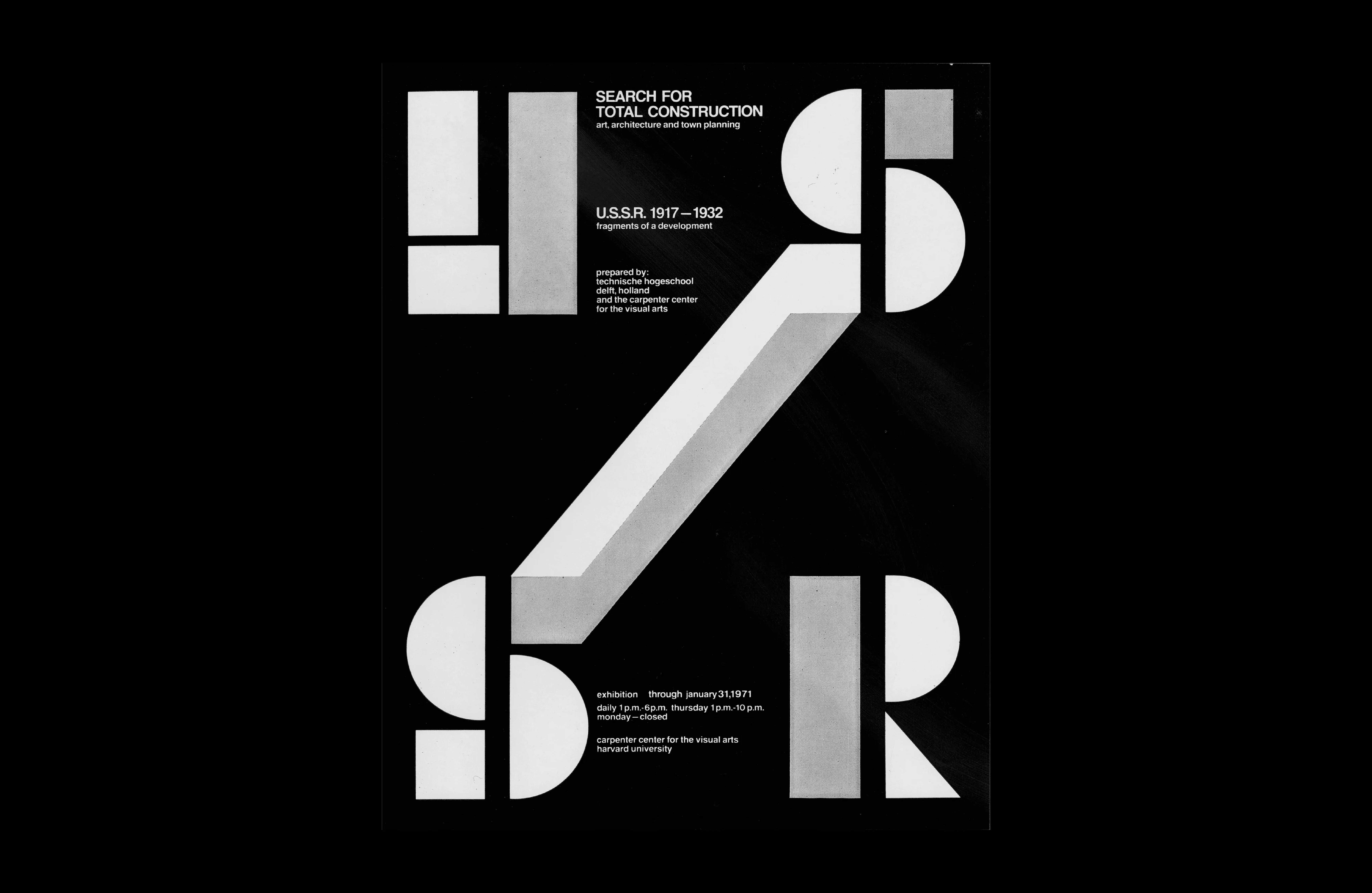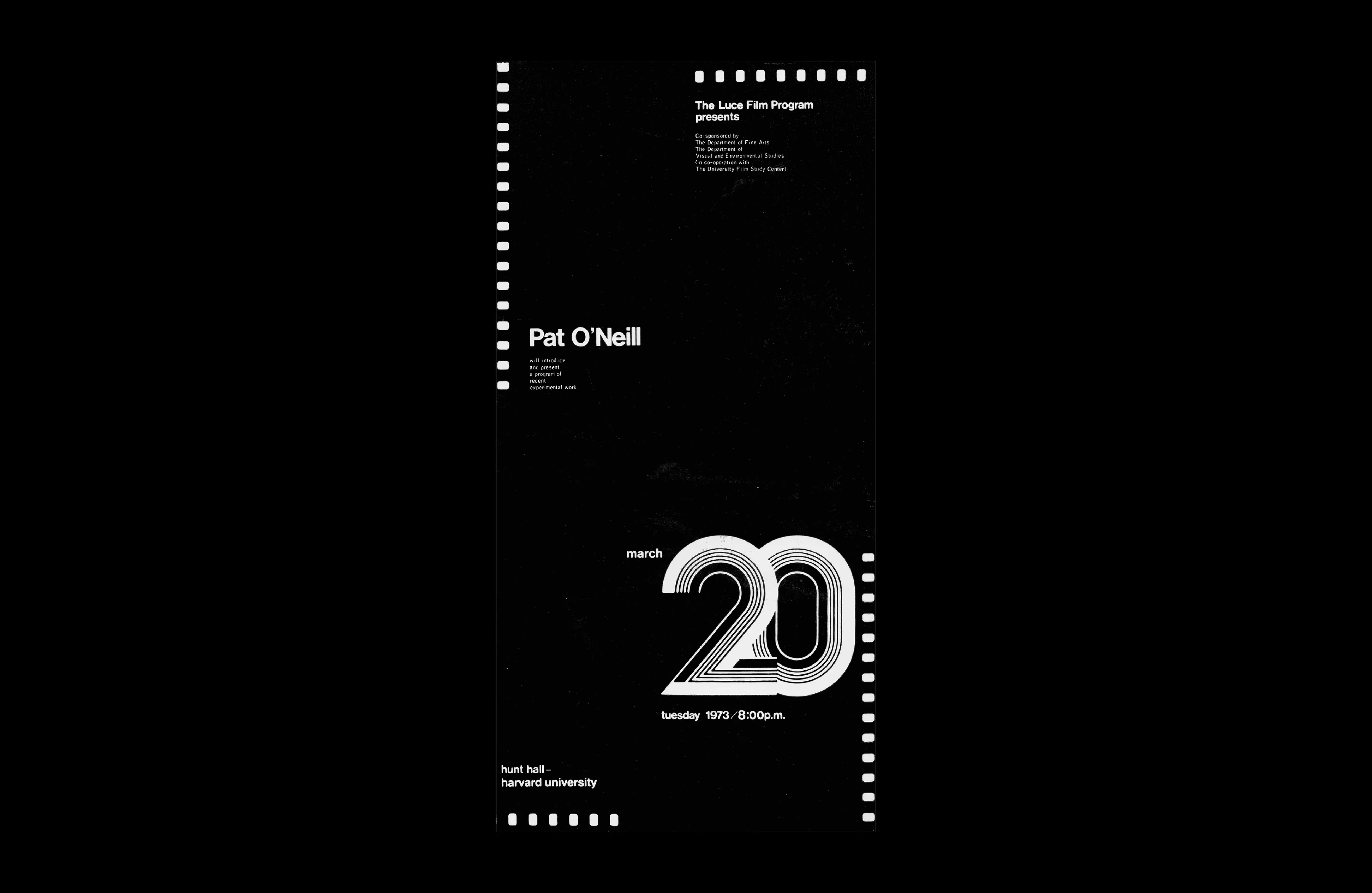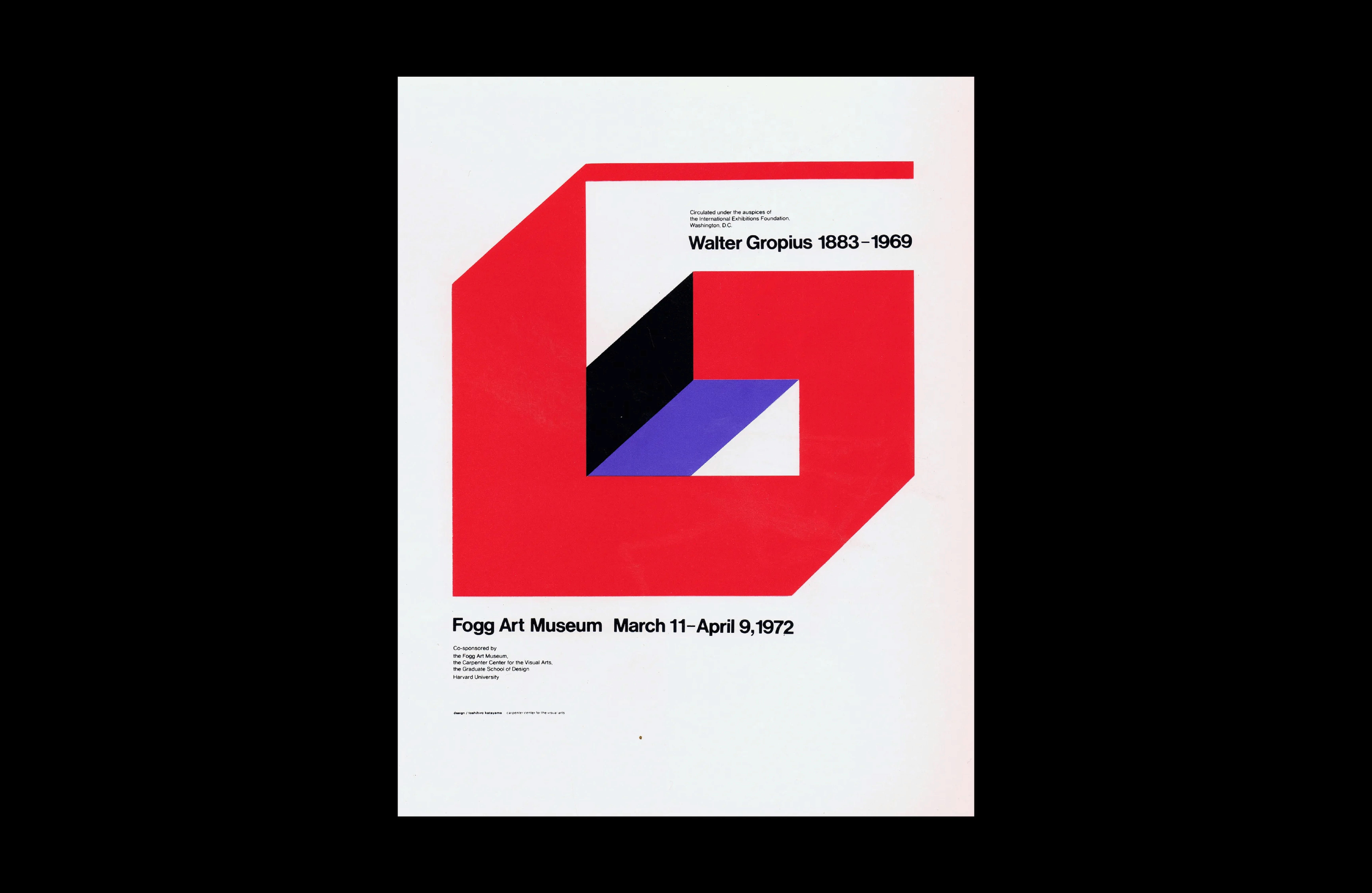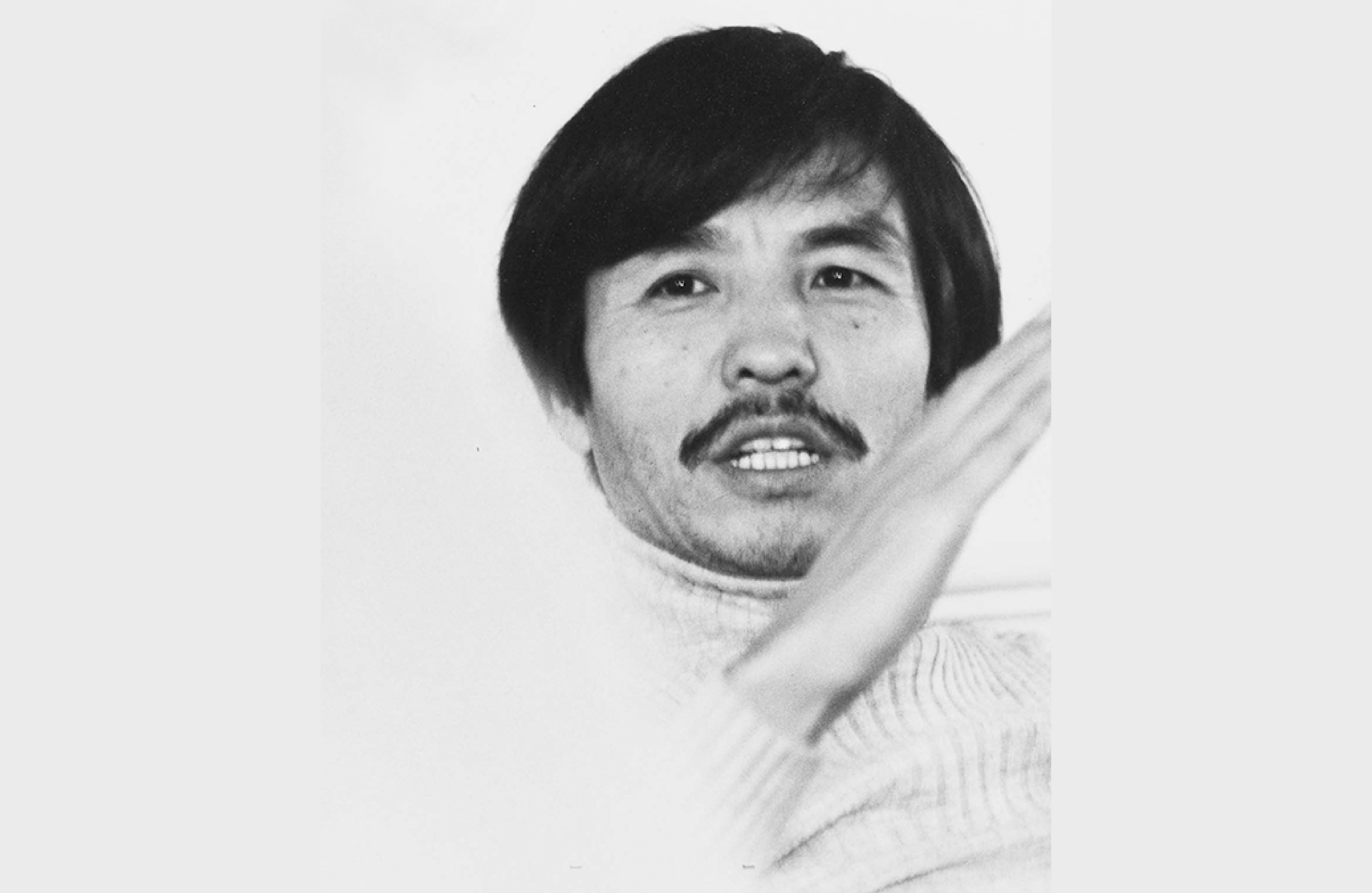Journal
Toshihiro Katayama
Kinetic Energy and Rhythm
"The result of his experiments always demands scrutiny and the study is always rewarding. So much graphic work is ephemeral, but Toshi’s graphic work can be lived with. The second look always reveals more and the third more again."
Toshihiro Katayama (1928-2013) was a pioneer in postwar Japanese design who played a significant role in shaping modern graphic design both in Japan and internationally. Born in Osaka, Katayama began his career in Japan, influenced by his father, designer Hiromine Katayama.
After his early successes, which included winning the silver medal at the Tokyo Art Directors Club in 1959, he expanded his career overseas, first moving to Switzerland and later to the United States. Katayama’s work encompassed a wide array of mediums, including graphic design, painting, sculpture, and large-scale environmental spatial works. His unique design style, often described as kinetic and rhythmically structured, reflected influences from modern jazz and the studies of Josef Albers.
He applied this aesthetic across various disciplines, creating a visual language that emphasized movement, space, and texture. This approach led to collaborations with renowned clients such as Geigy AG, Nikon, and Harvard University, where he also served as a faculty member for 30 years and was director from 1990 to 1995.
His influence and contributions to the design community were recognized internationally, notably through exhibitions supported by AIGA at the Institute of Graphic Arts Gallery in New York and in Toronto. His work broke boundaries, merging different artistic disciplines and transcending traditional definitions of graphic design. Katayama is remembered as a multi-dimensional creative force who constantly redefined the possibilities of spatial art and design, leaving a lasting impact on both Japanese and global design cultures.
Source
Design Reviewed, Canada Modern, Musashino Art University Museum
More Articles
